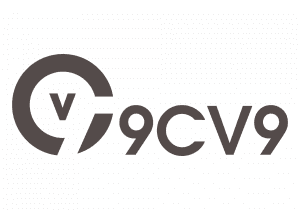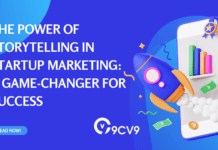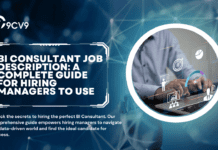Key Takeaways
- Candidate recruitment reports provide structured, data-driven insights to support fair and effective hiring decisions.
- These reports streamline the recruitment process by consolidating evaluations, interview scores, and candidate comparisons.
- Integrating reports into hiring strategies improves decision-making, reduces bias, and enhances overall recruitment outcomes.
In today’s competitive job market, hiring the right talent is more critical than ever. Organizations around the world are increasingly relying on data-driven strategies to improve their recruitment outcomes and ensure every hiring decision aligns with long-term business goals. Among the most impactful tools supporting this shift toward analytical hiring is the Candidate Recruitment Report. But what exactly is a candidate recruitment report, and how does it function within the modern recruitment ecosystem?

A Candidate Recruitment Report is a structured document used by HR professionals, recruiters, and hiring managers to evaluate and summarize a candidate’s qualifications, performance during assessments and interviews, cultural fit, and overall potential for a specific role. It is more than just a collection of resume data—it offers a detailed, objective view of each applicant’s strengths and weaknesses, often including both qualitative feedback and quantitative scoring from different stages of the hiring process.
As organizations increasingly aim to streamline hiring workflows, reduce unconscious bias, and ensure transparency across recruitment stages, candidate reports have become a vital part of the evaluation process. These reports play a pivotal role in aligning recruitment practices with organizational goals, improving collaboration among hiring teams, and facilitating informed decisions backed by evidence rather than intuition.
Furthermore, the evolution of HR technology—particularly with the integration of Applicant Tracking Systems (ATS), AI-based assessment tools, and automated reporting platforms—has made it easier than ever to generate comprehensive recruitment reports. These tools not only gather and structure candidate data but also provide insights through predictive analytics and benchmarking features. As a result, recruitment teams are empowered to make faster, smarter, and more equitable hiring choices.
Beyond the internal benefits for companies, candidate recruitment reports also contribute to a fairer experience for applicants. By documenting evaluations consistently, companies can defend their hiring decisions and provide structured feedback when required. This transparency is increasingly valued by today’s workforce, particularly those seeking clarity in how their applications are assessed.
This blog post will provide a deep dive into what a candidate recruitment report truly entails and how it functions across different stages of the recruitment process. From the essential components that make up the report to the practical steps involved in generating one, readers will gain a complete understanding of its importance, use cases, and best practices. Whether you’re an HR professional looking to standardize your hiring process or a business leader aiming to improve talent acquisition outcomes, mastering the use of recruitment reports is a crucial step toward building a high-performing, future-ready workforce.
In the sections that follow, we will explore the structure, benefits, tools, and actionable strategies associated with creating and using candidate recruitment reports—ensuring your hiring process is both efficient and effective in identifying top talent.
What is a Candidate Recruitment Report and How It Works
- Understanding a Candidate Recruitment Report
- Key Components of a Candidate Recruitment Report
- How a Candidate Recruitment Report Works
- Benefits of Using a Candidate Recruitment Report
- Common Mistakes to Avoid in Recruitment Reporting
- Best Practices for Creating Effective Candidate Recruitment Reports
- Candidate Recruitment Report Examples and Templates
- Integrating Reports into the Hiring Strategy
1. Understanding a Candidate Recruitment Report
A Candidate Recruitment Report is a crucial document in the modern hiring process. It offers a comprehensive summary of a candidate’s profile, performance, and potential fit for a specific role within an organization. Far more than just a resume review, it is a data-rich, multi-dimensional evaluation tool that enables HR teams and hiring managers to make objective, evidence-based decisions.
This section provides an in-depth exploration of what makes up a candidate recruitment report, how it’s used in practice, and why it’s essential for structured and strategic hiring.
Definition and Purpose of a Candidate Recruitment Report
- Definition:
- A candidate recruitment report is a detailed document that compiles all relevant data points about a job applicant—from their resume details and assessment scores to interview feedback and hiring recommendations.
- Primary Objectives:
- Streamline and standardize the hiring process
- Support unbiased and fair evaluation of candidates
- Facilitate communication between HR, hiring managers, and stakeholders
- Maintain a documented trail for compliance and audit purposes
Core Elements of a Candidate Recruitment Report
| Section | Description | Example |
|---|---|---|
| Candidate Overview | Basic information, qualifications, and professional summary | Name, email, education level, years of experience |
| Skills Assessment | Evaluation of both hard and soft skills | Coding test (90%), Communication skills (7/10) |
| Interview Summary | Highlights from panel interviews, structured ratings | Managerial round: 4.5/5, Culture fit round: 3/5 |
| Reference & Background Checks | Validations from previous employers, certifications, and legal records | Reference: Former manager confirms leadership potential |
| Cultural Fit Assessment | Alignment with company values and team dynamics | Assessed via DISC profile: Dominant-Initiator |
| Final Recommendation | Overall rating, suitability, and next-step suggestions | Shortlisted for final approval; suitable for leadership grooming |
Candidate Evaluation Matrix Example
| Criteria | Weight (%) | Candidate A | Candidate B | Candidate C |
|---|---|---|---|---|
| Technical Proficiency | 30% | 85% | 75% | 90% |
| Communication Skills | 20% | 8/10 | 7/10 | 9/10 |
| Cultural Fit | 15% | Good | Average | Excellent |
| Leadership Potential | 15% | Strong | Moderate | Strong |
| Experience Relevance | 10% | 5 years | 3 years | 6 years |
| Reference Feedback | 10% | Positive | Mixed | Excellent |
| Total Score | 100% | 87% | 74% | 93% |
Insight: Candidate C stands out with the highest total score, strongest technical skillset, and excellent cultural fit, making them a top choice for roles requiring both expertise and team alignment.
Types of Candidate Recruitment Reports
- Basic Report
- Suitable for entry-level roles
- Focuses on qualifications, skills, and basic screening results
- Comprehensive Report
- Used for mid-to-senior level roles
- Includes structured interview feedback, reference checks, and predictive insights
- Executive Hiring Report
- Tailored for leadership roles
- Includes strategic potential analysis, 360-degree reviews, and long-term fit projections
Tools Used to Generate Recruitment Reports
| Tool/Software | Functionality | Popular Platforms |
|---|---|---|
| Applicant Tracking System (ATS) | Collects and stores candidate data | Greenhouse, Lever, Workable |
| Pre-employment Assessment Tools | Evaluates skills and cognitive abilities | Codility, HackerRank, TestGorilla |
| Video Interview Platforms | Captures interview feedback and integrates ratings | HireVue, Spark Hire, VidCruiter |
| Background Screening Tools | Automates reference and legal checks | Checkr, GoodHire, Verified First |
| Reporting & Analytics Tools | Generates visual dashboards and final recruitment reports | Tableau, Power BI, Zoho Recruit Analytics |
Candidate Report: Example Template Overview
| Section | Content |
|---|---|
| Candidate Information | John Smith – Software Developer – 6 years experience |
| Resume Summary | B.Sc. in Computer Science, Former Senior Developer at XYZ |
| Technical Test Score | 92% – Passed advanced coding and algorithm tests |
| Interview Panel Feedback | 4.7/5 – Strong technical knowledge, confident communicator |
| Soft Skill Assessment | 8/10 – Good team player and conflict resolution skills |
| Cultural Alignment | Matches company values: Innovation, Collaboration, Integrity |
| Reference Summary | Previous manager recommends highly for leadership potential |
| Final Recommendation | Strongly recommended for hiring – Suitable for tech lead role |
Use Case Scenarios for Recruitment Reports
- Startup Hiring a First Product Manager
- Recruitment report helps founders assess not just experience, but cultural alignment and product strategy mindset.
- Enterprise Hiring 50+ Developers
- Structured reports help reduce unconscious bias and keep evaluations consistent across multiple panels and recruiters.
- Government Role Compliance Audits
- Documentation of each step and scoring helps defend hiring decisions in case of audits or disputes.
Why Understanding the Report Matters
- Ensures accountability and transparency in hiring decisions
- Helps organizations reduce bias by introducing objective frameworks
- Empowers HR to track trends and identify patterns in successful hires
- Provides clear communication between multi-level stakeholders
- Aids in talent pooling by archiving strong candidates for future roles
Understanding the structure and function of a candidate recruitment report equips HR professionals and hiring managers with a powerful tool to refine decision-making, eliminate inefficiencies, and build stronger, more aligned teams. In the following sections, we’ll explore how these reports are created and implemented within the broader hiring process.
2. Key Components of a Candidate Recruitment Report
A Candidate Recruitment Report is a critical HR analytics document that presents a detailed snapshot of the hiring pipeline, candidate profiles, recruitment funnel performance, and decision-making data. When structured effectively, this report enhances hiring efficiency, improves stakeholder communication, and ensures data-driven recruitment strategies. Below is a breakdown of the essential components that every comprehensive recruitment report must include.
1. Candidate Overview and Demographics
- Provides a summary of each candidate’s background, qualifications, and demographic details
- Supports diversity, equity, and inclusion (DEI) initiatives by tracking representation
Includes:
- Candidate name or ID
- Position applied for
- Location and nationality
- Education level and institutions
- Years of experience
- Age group, gender (optional per compliance)
Example Table: Candidate Demographics Overview
| Candidate ID | Role Applied | Location | Education | Experience | Gender | Age Group |
|---|---|---|---|---|---|---|
| C001 | Data Analyst | Singapore | B.Sc. Comp Sci | 3 years | Female | 25–34 |
| C002 | UI Designer | Thailand | B.A. Design | 5 years | Male | 35–44 |
2. Application Source and Channel Analytics
- Helps identify the most effective recruitment channels
- Tracks candidate origins for ROI evaluation on job postings
Data Points to Include:
- Job board (LinkedIn, Indeed, etc.)
- Employee referral
- Internal transfer
- Career site
- Recruitment agency
Channel Performance Matrix:
| Source | Number of Applicants | Shortlisted | Hired | Conversion Rate |
|---|---|---|---|---|
| 120 | 35 | 5 | 4.2% | |
| Employee Referral | 40 | 25 | 8 | 20% |
| Company Website | 60 | 15 | 3 | 5% |
3. Screening and Shortlisting Results
- Highlights pre-interview assessments, test scores, and filtering stages
- Allows hiring managers to understand candidate progression
Checklist Format Example:
| Candidate ID | Resume Review | Skill Assessment | Pre-screen Interview | Shortlisted |
|---|---|---|---|---|
| C003 | ✅ | ✅ | ✅ | ✅ |
| C004 | ✅ | ❌ | – | ❌ |
4. Interview Feedback Summary
- Consolidates interviewer ratings, comments, and recommendations
- Standardizes evaluations for consistent decision-making
Evaluation Criteria:
- Technical skills
- Communication abilities
- Problem-solving
- Culture fit
- Overall recommendation
Interview Feedback Grid:
| Candidate | Tech Skills (10) | Communication (10) | Problem Solving (10) | Culture Fit (10) | Final Verdict |
|---|---|---|---|---|---|
| C005 | 8 | 7 | 9 | 8 | Proceed |
| C006 | 5 | 6 | 6 | 5 | Hold |
5. Recruitment Funnel Analytics
- Provides a visual representation of candidate drop-off across recruitment stages
- Reveals bottlenecks and areas of improvement
Typical Funnel Stages:
- Applications Received
- Shortlisted
- Interviewed
- Offered
- Hired
Recruitment Funnel Chart Example:
Applications: 300
↓
Shortlisted: 90
↓
Interviewed: 60
↓
Offered: 15
↓
Hired: 10
Conversion Rate Table:
| Stage | Count | Conversion from Previous Stage | Cumulative Conversion |
|---|---|---|---|
| Applied | 300 | – | 100% |
| Shortlisted | 90 | 30% | 30% |
| Interviewed | 60 | 66.7% | 20% |
| Offered | 15 | 25% | 5% |
| Hired | 10 | 66.7% | 3.3% |
6. Time-to-Hire and Cost-to-Hire Metrics
- Crucial for evaluating recruitment speed and efficiency
- Helps justify HR spend and optimize resource allocation
Include Metrics Such As:
- Average time from application to hire
- Time spent at each recruitment stage
- Total cost per hire (advertising, agency fees, software, etc.)
Cost-to-Hire Calculation Table:
| Expense Category | Amount (USD) |
|---|---|
| Job Ads | $500 |
| Recruitment Software | $1,000 |
| Recruiter Salary (prorated) | $2,000 |
| Interview Panel Hours | $1,200 |
| Total Cost per Hire | $4,700 |
7. Candidate Experience Feedback
- Gathers applicant satisfaction through surveys
- Influences employer branding and future talent attraction
Key Metrics to Include:
- Application experience rating
- Interview fairness perception
- Communication clarity
- Net Promoter Score (NPS)
Candidate Experience Survey Summary:
| Question | Average Rating (1–10) |
|---|---|
| Was the application process easy to follow? | 8.5 |
| Did you receive timely updates? | 7.2 |
| Would you recommend our company? (NPS) | 40 (NPS Score) |
8. Offer Acceptance and Rejection Reasons
- Tracks how many offers were accepted or declined
- Analyzes reasons for candidate drop-off post-offer stage
Example Breakdown:
| Candidate ID | Offer Status | Reason for Rejection (if any) |
|---|---|---|
| C007 | Rejected | Counter-offer from current job |
| C008 | Accepted | – |
| C009 | Rejected | Relocation concerns |
9. Diversity and Inclusion Metrics
- Helps companies align with DEI hiring goals
- Ensures compliance and balanced representation
Suggested Metrics:
- Gender breakdown by role
- Minority representation
- Accessibility accommodations
- Equal opportunity indicators
Diversity Dashboard Example:
| Category | Percentage |
|---|---|
| Female | 46% |
| Male | 52% |
| Non-binary | 2% |
| Minority Group Representation | 28% |
10. Final Recommendation and Decision Summary
- Provides hiring panel consensus for final decision-making
- Supports HR documentation for audit and compliance
Decision Matrix Example:
| Candidate | Technical Score | Interview Average | Reference Check | Final Status |
|---|---|---|---|---|
| C010 | 85% | 7.5/10 | Positive | Hired |
| C011 | 65% | 6/10 | Neutral | Not Hired |
By incorporating these key components, a Candidate Recruitment Report becomes a strategic asset that improves visibility, accountability, and performance across the hiring lifecycle. Structuring the report with clear sections, data visualization tools, and actionable insights enables HR leaders to make more informed and timely hiring decisions.
3. How a Candidate Recruitment Report Works
The creation and use of a Candidate Recruitment Report involve a systematic, multi-stage workflow designed to gather, evaluate, and summarize a candidate’s qualifications, performance, and cultural fit. This report acts as a centralized decision-making tool, providing transparency and standardization throughout the hiring process. From data collection to final recommendations, each step contributes to generating an insightful and actionable document for HR teams and hiring managers.
This section breaks down how a candidate recruitment report works, including tools involved, step-by-step processes, and real-world applications supported by tables, charts, and evaluation matrices.
1. Step-by-Step Workflow: From Application to Report Delivery
Step 1: Candidate Application Intake
- Candidate submits resume via job portal, career page, or referral.
- Information is automatically captured by an Applicant Tracking System (ATS).
| Input Method | Captured Data |
|---|---|
| Career Portal | Resume, cover letter, contact details |
| LinkedIn Easy Apply | Profile information, endorsements |
| Employee Referral | Referral source, internal notes |
Step 2: Resume Screening and Parsing
- ATS parses resume content into structured data.
- Automated screening tools assess key qualifications (e.g., years of experience, skills match).
| Resume Screening Checklist | Candidate A Status |
|---|---|
| Minimum 5 years experience | ✔ |
| Bachelor’s degree in IT or CS | ✔ |
| Proficiency in SQL & Python | ✔ |
| Leadership experience | ✘ |
Step 3: Pre-Employment Assessments
- Candidates complete skill-based or cognitive assessments (online).
- Psychometric or personality tests may also be deployed.
| Assessment Category | Tool Used | Candidate Score |
|---|---|---|
| Technical Skills (Coding) | HackerRank | 89% |
| Analytical Reasoning | TestGorilla | 82% |
| Personality Assessment | DISC | Steady-Initiator |
Insight: Strong technical foundation with moderate analytical reasoning and a personality type suited for support roles.
Step 4: Interview Scheduling and Evaluation
- Selected candidates are invited for structured interviews.
- Multiple evaluators (HR, department lead, team peers) provide feedback using scorecards.
| Evaluation Category | Score (Out of 5) | Evaluator Notes |
|---|---|---|
| Communication Skills | 4.0 | Clear, concise, listens actively |
| Technical Knowledge | 4.5 | Deep understanding of database indexing |
| Problem Solving Approach | 3.5 | Logical but lacked speed in scenario tasks |
| Team Compatibility | 3.8 | Good attitude, asks collaborative questions |
Step 5: Compilation of Feedback and Data
- All feedback, assessment scores, and screening results are compiled into a centralized dashboard.
- HR team or recruitment software generates a Candidate Recruitment Report Template.
| Data Source | Integrated Format in Report |
|---|---|
| Resume | Summary profile section |
| Technical Test | Scorecard with interpretation |
| Interviews | Panel ratings and consolidated feedback |
| References | Summary quotes and reference reliability |
| Background Checks | Verification report and red flags |
Step 6: Final Review and Recommendation
- Hiring panel or recruitment team reviews report collectively.
- Candidate is given an overall score and tagged with hiring status.
| Final Evaluation Criteria | Weight (%) | Candidate Score |
|---|---|---|
| Technical Capability | 30% | 85% |
| Cultural Fit | 25% | 80% |
| Communication & Team Fit | 20% | 78% |
| Reference & Background Feedback | 15% | 90% |
| Strategic Thinking/Leadership | 10% | 70% |
| Total Composite Score | 100% | 82.5% |
Outcome: Candidate recommended for hiring with a development plan to enhance strategic leadership over the next 12 months.
2. Tools and Technologies That Power the Report Generation
| Tool/Software | Functionality | Example Platforms |
|---|---|---|
| ATS (Applicant Tracking System) | Resume intake, workflow automation | Greenhouse, Lever, BambooHR |
| Assessment Platforms | Skill tests, personality profiling | Codility, TestGorilla, Vervoe |
| Interview Feedback Tools | Standardized scorecards and digital evaluation forms | Google Forms, VidCruiter |
| Reference Checking Tools | Automated reference collection | Checkster, SkillSurvey |
| Reporting Dashboards | Report generation and analytics | Power BI, Tableau, Zoho |
3. Visual Workflow: How the Candidate Report Comes Together
Application Intake
↓
Resume Parsing via ATS
↓
Pre-screening & Assessment Results
↓
Structured Interviews Held
↓
Reference & Background Checks
↓
Final Report Compilation & Review
↓
Hiring Decision & Action Plan
4. Candidate Journey Mapping Example
| Stage | Time Taken (Days) | Touchpoints | Status |
|---|---|---|---|
| Resume Screening | 1 Day | ATS Auto-Filter | Passed |
| Technical Assessment | 2 Days | HackerRank | Scored 89% |
| Initial HR Interview | 1 Day | Zoom + Scorecard Form | Approved |
| Technical Panel Interview | 2 Days | Google Meet with 3 Interviewers | Mixed Feedback |
| Reference Check | 1 Day | Automated Survey via SkillSurvey | Excellent |
| Report Compilation | 1 Day | ATS + Power BI Dashboard | Completed |
| Hiring Committee Review | 1 Day | Final Scorecard Reviewed | Offered Position |
5. Use Cases: Real-World Applications of Candidate Reports
- Startup Hiring:
- Helps ensure a lean hiring team makes informed decisions using objective metrics without multiple redundant interviews.
- Enterprise-Scale Recruitment:
- Streamlines bulk hiring by auto-generating uniform reports for all candidates in high-volume talent acquisition.
- Diversity & Inclusion Initiatives:
- Supports blind recruitment practices by anonymizing identity fields and focusing on skills and performance scores.
Conclusion
The process of generating a Candidate Recruitment Report is a blend of automation, structured evaluation, and strategic decision-making. From the moment a candidate applies to the point where a hiring decision is made, every touchpoint contributes to a comprehensive and consistent profile of the applicant. Leveraging technology, assessment tools, and standardized formats ensures that hiring managers not only gain deeper insights but also foster fairness, compliance, and long-term talent success. Understanding how this process works is fundamental to optimizing recruitment workflows and building high-performing teams in any modern organization.
4. Benefits of Using a Candidate Recruitment Report
A well-structured Candidate Recruitment Report offers significant strategic advantages to employers, HR teams, and hiring managers by promoting informed decision-making, transparency, consistency, and efficiency throughout the hiring process. These reports consolidate various data points, enabling organizations to compare candidates objectively and align hiring choices with both short-term job requirements and long-term talent strategies.
This section highlights the core benefits of using candidate recruitment reports, supported by real-world examples, data matrices, and comparison tables that illustrate how they contribute to successful recruitment outcomes.
1. Enhanced Decision-Making Through Data-Driven Insights
- Objective Evaluation:
- Candidate reports aggregate multiple data sources (interview scores, assessments, background checks), allowing for fact-based hiring decisions.
- Reduces the risk of hiring based on gut feeling or bias.
- Consistent Candidate Comparisons:
- Standardized formats make it easy to compare candidates side-by-side using uniform criteria.
- Visual Comparison Matrix Example:
| Candidate | Tech Score | Culture Fit | Leadership Potential | Final Score | Decision |
|---|---|---|---|---|---|
| A | 88% | High | Medium | 82.5% | Recommended |
| B | 75% | Moderate | High | 77% | Shortlisted |
| C | 90% | Low | Low | 70% | Not Recommended |
Insight: Candidate A stands out with high technical ability and cultural alignment, despite moderate leadership skills, making them a strong hire for an individual contributor role.
2. Improved Hiring Efficiency and Workflow Optimization
- Faster Screening and Shortlisting:
- Reports consolidate relevant details into one view, eliminating the need to review lengthy resumes or scattered feedback.
- Streamlined Collaboration Among Hiring Stakeholders:
- Reports serve as a centralized document for hiring managers, interviewers, and HR teams to align on decisions.
- Hiring Process Efficiency Table:
| Stage | Without Report | With Recruitment Report |
|---|---|---|
| Resume Review (per role) | 2–3 hours | <1 hour |
| Interview Alignment | 1–2 meetings | 1 meeting |
| Final Decision Time | 3–5 days | 1–2 days |
Example: A mid-sized IT company reduced time-to-hire by 30% after implementing standardized recruitment reports into their hiring process.
3. Reduced Hiring Bias and Enhanced Fairness
- Standardized Evaluation Criteria:
- All candidates are evaluated on the same framework, regardless of background, age, gender, or location.
- Blind Hiring Capabilities:
- Reports can be anonymized to remove names and demographic details, focusing solely on competencies and performance.
- Bias Mitigation Matrix:
| Bias Source | Mitigated By Report? | How It Helps |
|---|---|---|
| Resume Prestige Bias | ✔ | Focuses on skills and test performance |
| Gender or Name Bias | ✔ | Anonymous scorecards and ATS filtering |
| Interviewer Subjectivity | ✔ | Combines panel scores and removes outliers |
Insight: Organizations committed to DEI (Diversity, Equity, and Inclusion) use recruitment reports as part of their inclusive hiring strategy.
4. Better Quality of Hires and Long-Term Retention
- Hiring for Role and Culture Fit:
- By combining technical assessments with personality and values alignment scores, recruiters hire candidates who are more likely to thrive in the company environment.
- Reduction in Early Attrition:
- Candidates hired through data-driven evaluation are more aligned with job expectations, reducing turnover in the first 6–12 months.
- Quality of Hire Improvement Chart:
| Metric | Before Reports | After Reports |
|---|---|---|
| First-Year Retention Rate | 68% | 85% |
| Manager Satisfaction Score | 7.2/10 | 8.6/10 |
| Candidate Role Readiness | 75% | 91% |
Example: A global marketing firm implemented structured reports and saw a 20% improvement in new hire satisfaction and performance during the first quarter.
5. Transparent Documentation for Compliance and Auditing
- Legal Protection and Compliance Support:
- In case of disputes or audits, reports provide documented justification for hiring or rejection decisions.
- Supports Global Hiring Standards:
- Aligns with GDPR, EEOC, and local labor regulations by maintaining a verifiable and consistent evaluation process.
- Audit Checklist Snapshot:
| Compliance Requirement | Fulfilled by Report? | Evidence Type |
|---|---|---|
| Interview Scoring Justification | ✔ | Interviewer ratings and written feedback |
| Hiring Decision Rationale | ✔ | Summary scores and hiring manager notes |
| Equal Opportunity Verification | ✔ | DEI scoring section or blind review history |
6. Reusability for Future Talent Pipelines
- Building a Talent Reserve:
- High-potential candidates who weren’t selected for the current role can be tracked for future openings.
- Internal Mobility and Promotion Planning:
- Reports serve as internal records when evaluating existing employees for new opportunities.
- Talent Pool Tracker Table:
| Candidate Name | Applied Role | Final Status | Suggested Future Fit |
|---|---|---|---|
| Priya Sharma | Marketing Specialist | Shortlisted | Senior Content Strategist |
| Luis Ortega | Data Analyst | Not Selected | Reporting Analyst |
| Adam Lee | Product Manager | Backup Candidate | Product Owner (Next Opening) |
Insight: Candidate reports are not just one-time evaluations—they are assets that feed into long-term talent planning strategies.
7. Supports Strategic HR Metrics and Analytics
- Track Key Performance Indicators (KPIs):
- Enables HR teams to track time-to-hire, quality-of-hire, and source effectiveness using consistent data.
- Enables Continuous Process Improvement:
- Aggregated reports reveal trends in skill gaps, hiring bottlenecks, and recruiter performance.
- HR Dashboard Sample:
| Metric | Value | Trend |
|---|---|---|
| Time-to-Hire | 21 Days | ↓ (Improved 15%) |
| Interview-to-Offer | 3.5 Interviews | Stable |
| Assessment Accuracy | 92% Match | ↑ (Improved 8%) |
Example: A fintech firm used aggregated recruitment report data to redesign their hiring strategy, reducing the number of interview rounds while maintaining hire quality.
Conclusion
Using a Candidate Recruitment Report is no longer optional for forward-thinking organizations—it is an essential recruitment asset that enhances hiring quality, fairness, compliance, and long-term workforce planning. From reducing bias and improving collaboration to enabling predictive insights and strategic decision-making, these reports offer a powerful competitive edge in talent acquisition. By embedding them into every stage of the recruitment process, companies can not only make smarter hires but also strengthen their employer brand and workforce sustainability.
5. Common Mistakes to Avoid in Recruitment Reporting
An effective candidate recruitment report serves as a cornerstone for data-driven hiring decisions. However, the value of such reports can be significantly diminished by common mistakes that hinder accuracy, objectivity, and usability. Avoiding these pitfalls is essential to ensure fair, efficient, and impactful hiring outcomes. This section explores the most frequent recruitment reporting errors, categorized by reporting phase, and provides actionable insights to mitigate them.
1. Inaccurate or Incomplete Candidate Data
Overview:
Recruitment reports lose credibility when they include missing or erroneous data, leading to misleading conclusions.
Common Mistakes:
- Failing to verify candidate information (e.g., experience, certifications).
- Leaving sections of the report blank or incomplete.
- Recording inconsistent data across different hiring stages.
Solutions:
- Implement validation steps within ATS systems.
- Use standardized forms and automated data input.
Example Chart: Data Verification Checklist
| Data Point | Verified By | Source Used | Status |
|---|---|---|---|
| Employment History | Hiring Manager | Resume, References | Verified |
| Technical Skills | Technical Lead | Skill Test Results | Verified |
| Educational Qualifications | HR Coordinator | Certificates | Pending |
2. Over-Reliance on Subjective Feedback
Overview:
While qualitative feedback is valuable, an overemphasis on opinions can result in biased or inconsistent candidate evaluations.
Common Mistakes:
- Basing scores solely on the interviewer’s “gut feeling”.
- Including vague feedback such as “seems like a good fit” without evidence.
- Skipping structured evaluations in favor of informal notes.
Solutions:
- Use competency-based interview frameworks.
- Standardize interview feedback with scoring rubrics.
Sample Matrix: Structured vs. Unstructured Evaluation Comparison
| Evaluation Type | Criteria-Based | Scoring Scale | Bias Risk | Candidate Comparison |
|---|---|---|---|---|
| Structured Assessment | Yes | 1–5 scale | Low | Easy |
| Unstructured Feedback | No | No scale | High | Difficult |
3. Ignoring Diversity and Inclusion Metrics
Overview:
Neglecting to track and report on diversity and inclusion (D&I) data results in blind spots and may reinforce unconscious hiring bias.
Common Mistakes:
- Not documenting demographic breakdowns of the candidate pool.
- Failing to assess inclusivity in interview panels.
- Avoiding sensitive metrics due to lack of training.
Solutions:
- Include D&I indicators in recruitment dashboards.
- Train hiring managers on inclusive hiring metrics.
Example: Diversity Recruitment Metrics Table
| Metric | Target (%) | Current (%) | Status |
|---|---|---|---|
| Female Representation | 45% | 38% | Below Target |
| Minority Candidates Screened | 35% | 40% | On Track |
| Inclusive Panel Composition | 50% | 30% | Needs Improvement |
4. Lack of Report Standardization Across Roles
Overview:
When reports differ drastically between departments or job levels, comparison becomes difficult, slowing decision-making.
Common Mistakes:
- Different formats for the same type of roles.
- Varying evaluation criteria between teams.
- Inconsistent use of rating scales.
Solutions:
- Use templates based on job families (e.g., tech, marketing, sales).
- Enforce organization-wide reporting standards.
Table: Standardized Report Template Structure
| Section Name | Required for All Roles? | Customization Allowed? |
|---|---|---|
| Candidate Overview | Yes | No |
| Skill Evaluation | Yes | Yes (based on role) |
| Cultural Fit Assessment | Yes | Yes |
| Final Recommendation | Yes | No |
5. Omitting Post-Hire Performance Feedback
Overview:
Failing to link recruitment reports with post-hire performance data leads to missed opportunities for continuous improvement.
Common Mistakes:
- Not tracking hired candidates’ job performance.
- Ignoring feedback loops between HR and team leads.
- No updates to report frameworks based on outcomes.
Solutions:
- Integrate performance data into recruitment dashboards.
- Hold quarterly recruitment review meetings.
Example Chart: Recruitment Quality vs. Onboarding Success
| Candidate Name | Report Score (100) | Time to Productivity (Weeks) | Performance Rating (6 Months) |
|---|---|---|---|
| Sarah J. | 88 | 4 | Excellent |
| Mike R. | 75 | 8 | Average |
| Nina L. | 93 | 3 | Excellent |
6. Failure to Benchmark Against Industry Standards
Overview:
Without benchmarking, organizations risk falling behind competitors in talent acquisition effectiveness.
Common Mistakes:
- Not comparing candidate scores against market averages.
- Ignoring compensation benchmarks.
- Overlooking time-to-hire efficiency.
Solutions:
- Use benchmarking reports from industry sources or platforms like LinkedIn Talent Insights, Glassdoor, or SHRM.
- Create internal historical benchmarks over time.
Benchmark Comparison Table: Internal vs. Industry Averages
| Metric | Internal Average | Industry Average | Gap |
|---|---|---|---|
| Time-to-Hire (Days) | 42 | 30 | +12 Days |
| Offer Acceptance Rate | 82% | 90% | -8% |
| Candidate Report Score | 80/100 | 78/100 | +2 |
7. Misalignment with Job Requirements
Overview:
A recruitment report that doesn’t reflect the actual job requirements fails to identify truly qualified candidates.
Common Mistakes:
- Misunderstanding the core competencies required for the role.
- Applying a generic template to a specialized position.
- Ignoring input from department leads during report design.
Solutions:
- Align report components with job description and KPIs.
- Collaborate with hiring managers to define role-specific criteria.
Checklist: Report vs. Job Requirement Alignment
| Requirement | Reflected in Report? | Evaluation Method Used |
|---|---|---|
| Python Proficiency | Yes | Technical Assessment Score |
| Stakeholder Communication | Yes | Interview Feedback |
| Budget Forecasting Experience | No | Missing from report |
Summary Table: Top Recruitment Reporting Mistakes to Avoid
| Mistake Category | Potential Consequences | Prevention Method |
|---|---|---|
| Incomplete Candidate Data | Misjudged talent potential | Data validation, automation |
| Subjective Feedback Bias | Unfair evaluations, poor hires | Structured interviews |
| D&I Blind Spots | Lack of representation, legal risk | Track diversity metrics |
| Report Inconsistency | Delayed decision-making, confusion | Role-specific templates |
| No Post-Hire Feedback Integration | Missed improvement opportunities | Link to performance management |
| No Industry Benchmarking | Inefficient hiring strategy | Use external/internal benchmarks |
| Job Role Misalignment | Hiring underqualified or overqualified talent | Collaborate with hiring managers |
By identifying and eliminating these common mistakes, organizations can dramatically improve the quality and effectiveness of their candidate recruitment reports. This, in turn, supports more strategic hiring decisions, reduces turnover, and contributes to long-term business success.
6. Best Practices for Creating Effective Candidate Recruitment Reports
Creating a candidate recruitment report that is both insightful and actionable requires adherence to structured best practices. These reports are instrumental in streamlining hiring processes, aligning recruitment strategies with business goals, and improving decision-making quality. The following section outlines the most important best practices to follow when developing an effective candidate recruitment report.
1. Establish Clear Objectives for the Report
- Define the purpose early
- Clarify whether the report is for internal HR analysis, client presentation, or executive review.
- Align the scope of the report with recruitment goals such as reducing time-to-hire or improving candidate quality.
- Identify the stakeholders
- Tailor content to decision-makers (HR leaders, hiring managers, external clients) with relevant KPIs.
- Adjust language and depth of analytics depending on the audience (technical vs non-technical).
2. Use Structured and Standardized Reporting Formats
- Adopt a consistent template
- Use predefined report structures to ensure consistency and comparability across time periods or departments.
- Recommended Report Structure Table
| Section | Description | Key Elements |
|---|---|---|
| Executive Summary | Brief overview of report findings | Goals, outcomes, recommendations |
| Recruitment Funnel | Tracks the stage-by-stage candidate flow | Applications, screening, interview, offer |
| Metrics Dashboard | Visual KPIs and trend analysis | Time-to-hire, cost-per-hire, candidate quality |
| Candidate Profiles | Overview of shortlisted applicants | Skills, experience, assessment scores |
| Recommendations | Suggested improvements or next steps | Process adjustments, pipeline needs |
3. Focus on Actionable Metrics and KPIs
- Track both quantitative and qualitative indicators
- Quantitative:
- Time-to-fill
- Cost-per-hire
- Candidate conversion rates
- Offer acceptance rate
- Qualitative:
- Cultural fit assessment
- Interview panel feedback
- Candidate engagement levels
- Quantitative:
- Visualize data effectively
- Use bar charts, pie charts, and funnel diagrams for clarity.
- Example: Recruitment Funnel Chart
Applicants (1,000) ↓ Screened (600) ↓ Interviewed (150) ↓ Offered (30) ↓ Hired (15)
4. Maintain Data Integrity and Accuracy
- Validate data sources
- Pull metrics from trusted ATS (Applicant Tracking Systems) or HR analytics platforms.
- Ensure real-time updates to avoid lagging or outdated metrics.
- Avoid duplication and human error
- Cross-check for duplicate candidate entries.
- Automate data pulling with HR tools to reduce manual errors.
- Matrix: Data Quality Risk Matrix
| Risk Type | Impact | Mitigation Strategy |
|---|---|---|
| Outdated Data | High | Use real-time dashboards |
| Missing Fields | Medium | Set mandatory reporting fields |
| Duplicate Entries | High | Implement unique candidate IDs |
5. Tailor Content to the Audience
- For Hiring Managers:
- Focus on top candidate profiles, interview results, and skills fit.
- Include personalized recommendations on final hiring decisions.
- For Executives:
- Highlight high-level metrics like ROI on recruitment campaigns and workforce planning trends.
- Showcase benchmarks against industry standards.
- For Clients (in case of staffing agencies):
- Include service-level KPIs such as candidate turnaround time, job match scores, and client satisfaction feedback.
6. Emphasize Data Visualization and Layout Clarity
- Choose visuals that match the metric type
- Use pie charts for distribution (e.g., source of hire)
- Use line graphs for trend tracking (e.g., time-to-hire over 6 months)
- Use scorecards for individual candidate assessments
- Example: Candidate Assessment Matrix
| Candidate | Technical Score (out of 10) | Soft Skills Score | Cultural Fit | Overall Suitability |
|---|---|---|---|---|
| Jane Doe | 9 | 8 | High | Strong |
| John Smith | 7 | 9 | Medium | Moderate |
| Alice Tan | 8 | 7 | High | Strong |
7. Include Contextual Insights and Recommendations
- Interpret the data
- Don’t just present metrics—explain what they mean.
- Identify bottlenecks (e.g., high drop-off rates at the interview stage).
- Provide forward-looking recommendations
- Suggest tactical improvements such as:
- Reducing interview rounds to improve time-to-hire.
- Diversifying job board usage for broader reach.
- Suggest tactical improvements such as:
8. Align Report Timelines With Recruitment Cycles
- Set a frequency for reporting
- Weekly: For ongoing recruitment drives.
- Monthly: For executive review and department-wide evaluation.
- Quarterly: For strategic planning and forecasting.
- Timeline Reporting Table
| Report Frequency | Best Used For | Metrics Focus |
|---|---|---|
| Weekly | Day-to-day campaign performance | Source performance, drop-off rates |
| Monthly | Process optimization | Cost metrics, quality metrics |
| Quarterly | Strategic analysis | ROI, market trends, diversity KPIs |
9. Leverage Automation and Reporting Tools
- Adopt modern recruitment analytics platforms
- Use tools like Workday, Lever, Greenhouse, or Power BI dashboards.
- Integrate ATS systems with reporting modules for dynamic data access.
- Advantages of Automated Reporting
- Reduces time spent on data entry
- Increases accuracy of metrics
- Enables real-time decision-making
10. Ensure Compliance and Ethical Reporting
- Data privacy and protection
- Anonymize candidate information when necessary.
- Adhere to data protection regulations such as GDPR or local labor laws.
- Transparency and fairness
- Avoid bias in candidate evaluation reports.
- Standardize scoring to ensure equal opportunity reporting.
Conclusion: Building a Recruitment Report That Drives Results
By applying these best practices, HR professionals and recruiters can create high-impact, data-driven recruitment reports that deliver value across all stages of the hiring process. Whether used for internal analysis, client presentations, or strategic workforce planning, a well-structured candidate recruitment report supports more informed hiring decisions, enhances collaboration, and optimizes recruitment ROI.
7. Candidate Recruitment Report Examples and Templates
Candidate recruitment reports can vary significantly based on industry, hiring goals, company size, and the nature of the position. However, certain structural elements are consistent across all well-crafted reports. This section explores various examples and templates that can guide HR teams, recruiters, and hiring managers in creating actionable and data-driven recruitment reports.
Sample Candidate Recruitment Report Templates
1. Basic Candidate Evaluation Template
- Purpose: Used by small businesses or startups for straightforward recruitment assessments.
- Components:
- Candidate Name & Contact Details
- Position Applied For
- Resume Summary
- Interview Date & Interviewer
- Skills Rating (1–5 scale)
- Final Recommendation
| Candidate Name | Position | Experience (yrs) | Communication Skills | Technical Skills | Cultural Fit | Final Verdict |
|---|---|---|---|---|---|---|
| Jane Doe | UX Designer | 4 | 4/5 | 5/5 | 4/5 | Proceed to Final Round |
| John Smith | UX Designer | 6 | 3/5 | 3/5 | 5/5 | Rejected |
2. Comprehensive Enterprise-Level Recruitment Report Template
- Purpose: Designed for large-scale organizations hiring for multiple departments or executive roles.
- Components:
- Recruitment Funnel Metrics
- Candidate Pipeline Stage Analysis
- Source Effectiveness (e.g., job boards, referrals, agencies)
- Interviewer Score Matrix
- Offer Acceptance Rate
- Diversity & Inclusion Breakdown
Recruitment Funnel Analysis Table
| Stage | No. of Candidates | Conversion Rate (%) |
|---|---|---|
| Applications Received | 320 | 100% |
| Shortlisted for Interview | 80 | 25% |
| Interviewed | 40 | 12.5% |
| Offered | 10 | 3.1% |
| Accepted | 7 | 2.2% |
Diversity Metrics Table
| Category | Percentage (%) |
|---|---|
| Female | 42 |
| Male | 55 |
| Non-binary | 3 |
| Minority Group Representation | 36 |
Example Reports by Use Case
1. Entry-Level Hiring Report Example
- Use Case: Hiring multiple entry-level data analysts for a tech startup.
- Key Metrics:
- Time to Fill: 18 days
- Top Source: LinkedIn
- Interview Pass Rate: 35%
- Average Candidate Rating: 4.1/5
Candidate Evaluation Matrix
| Name | GPA | Technical Test | Excel Skills | SQL Skills | Communication | Overall Score |
|---|---|---|---|---|---|---|
| Emma Torres | 3.8 | 90% | Advanced | Intermediate | Excellent | 4.6/5 |
| Brian Koh | 3.6 | 85% | Intermediate | Advanced | Good | 4.2/5 |
2. Executive Role Hiring Report Example
- Use Case: Recruiting a Chief Marketing Officer (CMO) for an eCommerce brand.
- Report Components:
- Executive Summary with Benchmark Profiles
- Behavioral Interview Insights
- 360-Degree Reference Feedback
- Compensation Benchmarking
- Risk Analysis (e.g., cultural mismatch, tenure history)
Risk Evaluation Matrix
| Candidate | Cultural Fit | Leadership Track Record | Tenure Stability | Risk Level |
|---|---|---|---|---|
| Michael Tan | Excellent | Proven C-Suite Experience | Avg. 3.5 years/role | Low |
| Lisa Rowe | Moderate | Strong Team Building Skills | Avg. 1.8 years/role | Medium |
Customisable Candidate Report Template Sections
1. Candidate Profile Snapshot
- Name, Photo (optional), Contact Information
- Position Applied For
- Source of Application
- Resume Summary
- Social Media Links (LinkedIn, GitHub, Portfolio)
2. Competency-Based Scoring
| Competency | Score (1-5) | Notes |
|---|---|---|
| Communication | 4 | Clear, concise, confident |
| Problem Solving | 5 | Demonstrated strong logic |
| Technical Expertise | 3 | Basic Python knowledge |
| Team Collaboration | 4 | Worked in agile environments |
3. Hiring Manager’s Final Notes
- General impressions from interviews
- Recommended training areas
- Cultural alignment comments
- Overall hiring recommendation
Industry-Specific Report Examples
1. Healthcare Sector Candidate Report
- Includes License Verification
- Compliance Checks
- Clinical Experience Metrics
| Candidate Name | Nursing License | Years in ICU | Bedside Manner Score | Compliance Issues | Recommendation |
|---|---|---|---|---|---|
| Sarah Lin | Verified | 5 | 5/5 | None | Hire |
2. Technology Sector Report
- Emphasizes Technical Assessment Scores
- Portfolio Review
- GitHub Contributions
| Candidate | GitHub Stars | Code Test Score | Stack Experience | Final Rating |
|---|---|---|---|---|
| Alex Duong | 120+ | 92% | React, Node.js | 4.8/5 |
Downloadable Report Templates (Suggested Categories)
| Template Name | Best For | Format |
|---|---|---|
| Basic Recruitment Report | Small teams & startups | Excel, Google Sheets |
| Competency-Based Interview Summary | Mid-level hiring | Word, PDF |
| Executive Hiring Dashboard | C-Suite recruitment | PowerPoint, Excel |
| DEI-Focused Recruitment Report Template | Companies with DEI objectives | Google Sheets, PDF |
| High-Volume Hiring Report | Recruitment agencies, BPOs | Excel, Tableau |
Summary
Candidate recruitment report templates serve as essential tools for tracking hiring progress, evaluating candidate quality, and supporting data-backed decision-making. Whether for a startup or a multinational enterprise, tailoring report formats to hiring goals ensures a structured and efficient recruitment process. Using the examples and templates above can significantly enhance your ability to document, communicate, and act on recruitment insights effectively.
8. Integrating Reports into the Hiring Strategy
Effectively integrating candidate recruitment reports into a hiring strategy enhances data-driven decision-making, improves recruitment efficiency, and aligns talent acquisition with long-term organizational goals. This section outlines how to incorporate recruitment reports into the overall hiring framework for maximum impact.
Aligning Recruitment Reports with Business Goals
- Establish strategic hiring objectives
- Define the organization’s talent needs based on projected growth, skill gaps, and succession planning.
- Use recruitment reports to map historical hiring trends and identify future hiring demands.
- Bridge recruitment data with business KPIs
- Align recruitment metrics (e.g., time-to-fill, cost-per-hire) with corporate KPIs such as productivity, revenue per employee, and retention rate.
- Example:Recruitment MetricBusiness KPI ImpactedTime-to-hireProject delivery speedQuality of hireTeam performance benchmarksOffer acceptance rateEmployer branding effectiveness
Embedding Reports in Strategic Workforce Planning
- Support proactive hiring decisions
- Analyze reports to forecast hiring needs and budget requirements.
- Anticipate turnover and skill shortages through trend analytics.
- Create data-backed hiring roadmaps
- Example:QuarterRoles to FillPriority LevelSourcing Channel InsightsQ15 EngineersHigh80% from tech job boardsQ23 HR ManagersMedium60% from LinkedIn & referrals
Enhancing Recruitment Marketing with Reports
- Tailor employer branding efforts
- Use demographic data from reports to identify audience segments and craft targeted recruitment campaigns.
- Optimize content strategy for job ads based on sourcing performance in the report.
- Optimize sourcing channels
- Example sourcing effectiveness matrix:SourceApplicationsInterviewsHiresConversion RateLinkedIn120451512.5%Company Careers Page90251011.1%Recruitment Agency4015512.5%
Guiding Hiring Team Collaboration
- Facilitate team alignment
- Use shared dashboards and summary reports to ensure hiring managers, HR, and recruiters are aligned on candidate expectations and selection criteria.
- Support interview structuring
- Integrate candidate evaluations and skill gap analysis into interview planning.
- Build a feedback loop where interviewers use previous report insights to focus on weak points or validate strengths.
Automating and Streamlining Recruitment Reporting
- Implement HR technology tools
- Use applicant tracking systems (ATS), CRM tools, and HR analytics software to generate real-time recruitment reports.
- Ensure seamless integration of reporting tools with broader HRIS platforms.
- Automated dashboards for real-time insights
- Example of a recruitment KPI dashboard:MetricCurrentTargetStatusTime-to-fill28 days25 days⚠️ Needs ImprovementCandidate Satisfaction88%90%✅ On TrackCost-per-hire$4,200$4,000⚠️ Slightly Over
Driving Continuous Improvement
- Regular review cycles
- Schedule monthly or quarterly reviews of candidate recruitment reports to assess what’s working and what needs change.
- Include report-based insights in hiring team performance reviews.
- A/B testing recruitment strategies
- Compare the outcomes of different sourcing or screening strategies based on report data.
- Use statistical significance matrices to determine which strategy yields better results.
Integrating Candidate Feedback Loops
- Post-hire evaluation reports
- Use employee performance data from their first 6–12 months to assess the accuracy of recruitment decision-making.
- Feed this information back into the recruitment report model for iterative improvements.
- Example performance correlation matrix:Evaluation FactorPre-hire Report ScoreOnboarding Score6-Month ReviewTechnical Skills9/108/109/10Communication6/107/107/10Cultural Fit5/108/109/10
Customizing Reports for Departmental Needs
- Role-specific report frameworks
- Customize the report structure to highlight attributes relevant to each department, such as:
- Sales: communication skills, lead conversion success.
- Engineering: problem-solving ability, coding assessments.
- Customer Service: empathy, service quality metrics.
- Customize the report structure to highlight attributes relevant to each department, such as:
- Departmental hiring trend charts
- Example:DepartmentAvg. Time-to-FillCandidate Quality ScoreRetention Rate (12 mo)IT32 days8.7/1091%Marketing26 days7.9/1088%Finance29 days8.2/1093%
Conclusion
Integrating candidate recruitment reports into your hiring strategy is a powerful way to align talent acquisition with organizational success. By using structured data, customized dashboards, and continuous feedback loops, companies can ensure smarter, faster, and more consistent hiring decisions. This data-centric approach strengthens every stage of recruitment, from sourcing to onboarding, while building a foundation for scalable and sustainable talent management.
Conclusion
In today’s hyper-competitive talent acquisition landscape, leveraging structured data is no longer optional—it’s a necessity. The candidate recruitment report stands as a critical strategic tool that empowers recruiters, HR professionals, and hiring managers to make informed, transparent, and effective hiring decisions. As organizations aim to streamline processes and enhance the quality of their hires, understanding what a candidate recruitment report is and how it functions becomes essential to long-term success.
These reports go far beyond simple resume assessments or interview scores. They are comprehensive, data-driven documents that present an in-depth view of each candidate’s suitability for a role, based on a mix of hard metrics (like skills match, experience, and assessment results) and soft insights (such as cultural fit or leadership potential). With detailed evaluation matrices, customizable templates, and structured feedback loops, recruitment reports help unify the decision-making process across departments and reduce bias in hiring outcomes.
Moreover, integrating these reports into your recruitment and talent acquisition strategy provides numerous benefits—from improved hiring accuracy and time-to-hire metrics to enhanced collaboration among stakeholders and reduced turnover. By standardizing candidate evaluation criteria, recruitment reports also strengthen employer branding through fairness, professionalism, and transparency.
However, the value of these reports is fully realized only when best practices are followed—avoiding common pitfalls like data overload, inconsistent scoring, and poor documentation. When used correctly, these reports not only serve as performance indicators for the recruitment function but also as living documents that feed into broader workforce planning and talent forecasting initiatives.
In conclusion, adopting candidate recruitment reporting as a core component of your hiring framework transforms recruitment from a subjective task into a scalable, objective, and insight-driven process. Whether you are hiring five people or five hundred, the ability to leverage structured recruitment reports ensures that every hiring decision is grounded in evidence, aligned with company goals, and optimized for long-term growth. As hiring demands evolve, those who invest in high-quality recruitment reporting will be best positioned to attract, evaluate, and retain the right talent with precision and confidence.
If you find this article useful, why not share it with your hiring manager and C-level suite friends and also leave a nice comment below?
We, at the 9cv9 Research Team, strive to bring the latest and most meaningful data, guides, and statistics to your doorstep.
To get access to top-quality guides, click over to 9cv9 Blog.
People Also Ask
What is a candidate recruitment report?
A candidate recruitment report is a structured document that summarizes key data and insights about applicants and the hiring process.
Why is a candidate recruitment report important?
It helps HR teams make data-driven hiring decisions, track recruitment performance, and identify process improvements.
What does a recruitment report typically include?
It includes candidate profiles, interview scores, hiring timelines, job posting analytics, and recruitment funnel metrics.
How does a recruitment report help hiring managers?
It offers insights into candidate quality, source effectiveness, and bottlenecks, helping managers refine hiring strategies.
Who uses candidate recruitment reports?
HR professionals, talent acquisition teams, hiring managers, and recruiters use these reports to evaluate and optimize hiring processes.
What metrics are commonly found in recruitment reports?
Common metrics include time-to-hire, cost-per-hire, applicant sources, candidate drop-off rates, and offer acceptance rates.
Can recruitment reports improve the hiring process?
Yes, they provide data that helps eliminate inefficiencies, enhance candidate experience, and ensure faster, better hires.
How often should recruitment reports be generated?
Weekly or monthly reports are common, but frequency depends on hiring volume and organizational needs.
Are recruitment reports useful for executive decision-making?
Yes, they provide high-level insights that align recruitment efforts with business goals and workforce planning.
What tools can be used to create recruitment reports?
HR software like Workday, Greenhouse, Lever, and custom dashboards in Excel or BI tools like Power BI are commonly used.
What is the difference between a recruitment and candidate report?
A recruitment report covers overall hiring activity, while a candidate report focuses on individual applicant details and assessments.
Can recruitment reports help with compliance?
Yes, they track hiring metrics and documentation needed to meet legal and regulatory compliance standards.
How do you structure a recruitment report?
Structure it with clear sections: summary, candidate data, hiring pipeline, KPIs, and recommendations.
What is a recruitment pipeline in the report?
It refers to the stages candidates move through, from application to final selection, helping track conversion at each step.
Can small businesses benefit from recruitment reports?
Yes, they help streamline hiring, identify quality candidates faster, and reduce cost-per-hire even for smaller teams.
Do candidate recruitment reports support DEI goals?
Yes, they track demographic data and hiring patterns to ensure fair and inclusive recruitment practices.
What’s the role of automation in recruitment reporting?
Automation streamlines data collection, reporting, and visualization, reducing manual errors and saving time.
Are templates available for candidate recruitment reports?
Yes, many platforms and HR consultants provide customizable templates for standardized reporting.
How can recruitment reports be customized for roles?
They can highlight job-specific KPIs, skills match, cultural fit scores, and sourcing channels tailored to each role.
What are the challenges in creating recruitment reports?
Common challenges include inconsistent data, lack of integration, manual tracking, and unclear KPIs.
Can recruitment reports show return on investment (ROI)?
Yes, by comparing hiring costs, time-to-fill, and employee performance, they help evaluate recruitment ROI.
What is time-to-hire in a recruitment report?
It measures the number of days from job posting to candidate acceptance, reflecting hiring efficiency.
How do recruitment reports support workforce planning?
They provide historical data and trends that inform talent forecasting and strategic workforce decisions.
Can AI be used in generating recruitment reports?
Yes, AI tools analyze recruitment data, identify patterns, and automatically generate insights and recommendations.
How do you present a recruitment report to stakeholders?
Use visual dashboards, charts, and concise summaries to highlight key takeaways and actionable insights.
What is candidate conversion rate in recruitment reporting?
It shows the percentage of applicants who move from one hiring stage to the next, helping assess pipeline efficiency.
How are recruitment reports used in audits?
They provide documented hiring records and metrics needed to demonstrate compliance during audits.
Can recruitment reports predict hiring success?
Yes, predictive analytics can identify which candidate traits and sourcing channels lead to successful hires.
What is the importance of benchmarking in recruitment reports?
Benchmarking compares internal hiring metrics to industry standards to identify performance gaps and best practices.
Do recruitment reports help reduce hiring bias?
They reveal trends and inconsistencies in hiring decisions, helping HR teams adopt more objective, fair processes.































![Writing A Good CV [6 Tips To Improve Your CV] 6 Tips To Improve Your CV](https://blog.9cv9.com/wp-content/uploads/2020/06/2020-06-02-2-100x70.png)


